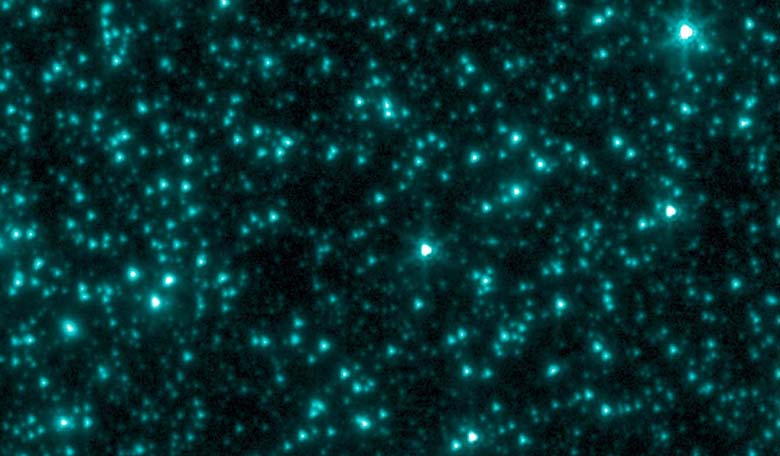In a new twist to explain what form of material the mysterious substance dark matter is made from, a scientist at NASA's Goddard Space Flight Center in Greenbelt, Maryland, has suggested that it may be made up of primordial black holes formed during the first second of our universe's existence.
This new theory has been suggested based on studies that started just over a decade ago. Back in 2005, a team of astronomers, led by Alexander Kashlinsky, used NASA's Spitzer Space Telescope to explore the background glow of infrared light in the Universe and noted that the glow in the area of the sky they were looking at was excessively patchy. It was concluded that the likely explanation was cumulative light from the first sources to illuminate the universe over 13 billion years ago. Follow-up studies of this cosmic infrared background (CIB) revealed that other parts of the sky also showed similar unexpected patterns.
"This study is an effort to bring together a broad set of ideas and observations to test how well they fit, and the fit is surprisingly good," said Kashlinsky, an astrophysicist at NASA Goddard. "If this is correct, then all galaxies, including our own, are embedded within a vast sphere of black holes each about 30 times the Sun's mass."
Further studies on another type of cosmic background radiation, but this in the X-ray (the cosmic X-ray background, CXB), helped to corroborate these findings as it showed the irregular glow of low-energy X-rays in the CXB matched the patchiness of the CIB quite well. Light from the first stars, initially emitted mainly in the optical and ultraviolet light would now be stretched to infrared wavelengths and would therefore not contribute to the CXB background glow. What could possibly then account for the irregular low-energy X-ray emission?
The only culprit responsible for being sufficiently luminous across a wide energy range is a black hole. The research team therefore concluded that primordial black holes must have been abundant when the first stars formed, so much so that they must have made up at least one out of every five of the sources contributing to the CIB.
Understanding what exactly dark matter is made up of, is an area of active research and although weakly interacting massive particles (WIMPS) is one of the most favoured theories to explain what dark matter is, evidence of these hypothetical particles has yet to be confirmed.
"These studies are providing increasingly sensitive results, slowly shrinking the box of parameters where dark matter particles can hide," Kashlinsky said. "The failure to find them has led to renewed interest in studying how well primordial black holes – black holes formed in the universe's first fraction of a second – could work as dark matter."
Kashlinsky explains that for the first 500 million years of the Universe’s history, dark matter first collapsed into clumps called minihaloes, which provided a gravitational seed enabling normal matter to accumulate – which at this stage was too hot to coalesce and form stars. The mini halos facilitated the creation of the first stellar population by allowing pockets of gas to become dense enough so that they would collapse on their own. Even if only a small fraction of minihaloes manage to produce stars, Kashlinsky and his team show that if black holes do play the part of dark matter, this process occurs more rapidly and easily produces the irregularity of the CIB detected in Spitzer data.
"Depending on the mechanism at work, primordial black holes could have properties very similar to what LIGO detected," Kashlinsky explained. "Future LIGO observing runs will tell us much more about the universe's population of black holes, and it won't be long before we'll know if the scenario I outline is either supported or ruled out.”
Kashlinsky is currently leading a science team working on a project named LIBRAE as part of the European Space Agency's Euclid mission. This project will help to probe source populations in the CIB with high precision and therefore determine what portion was produced by black holes.











